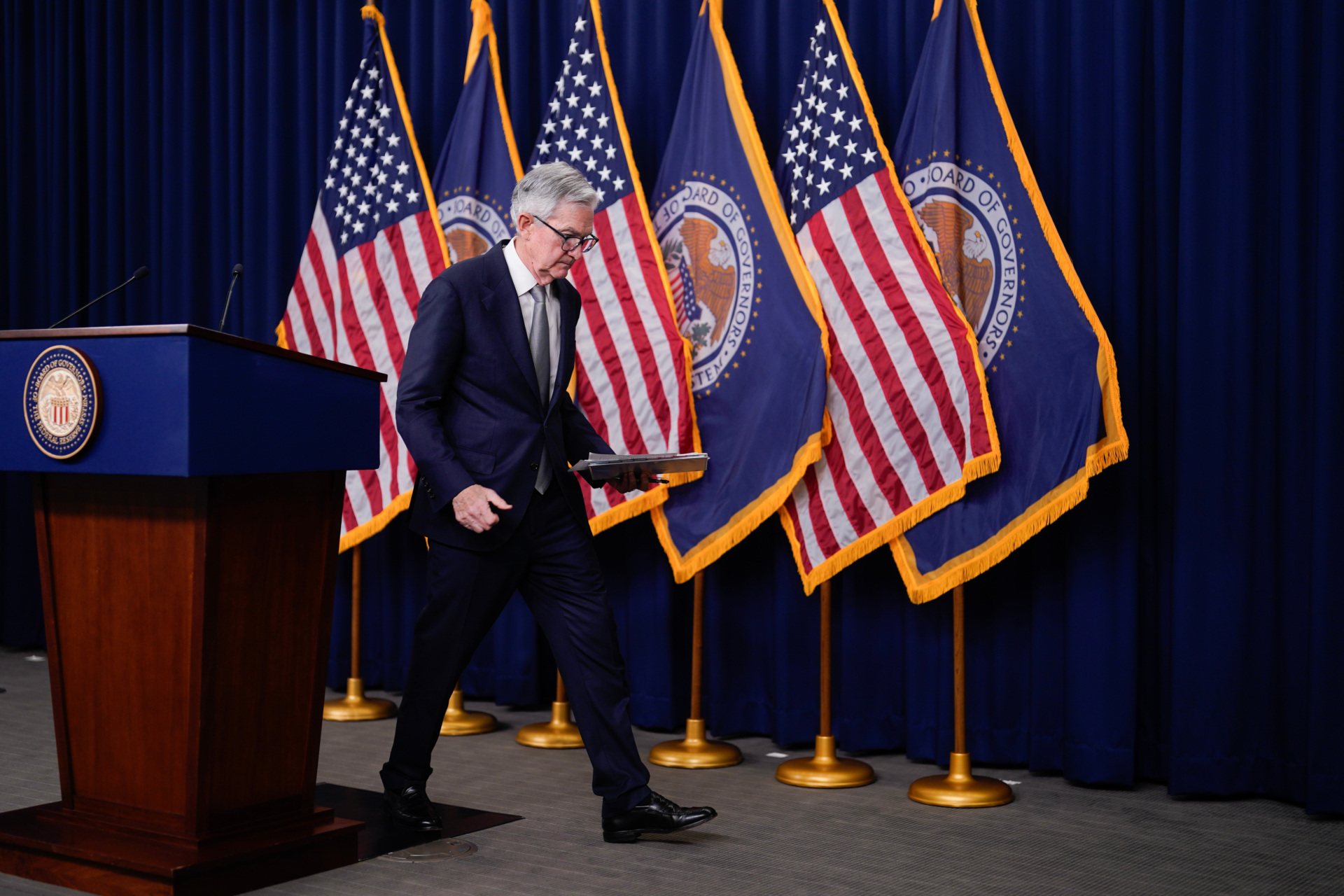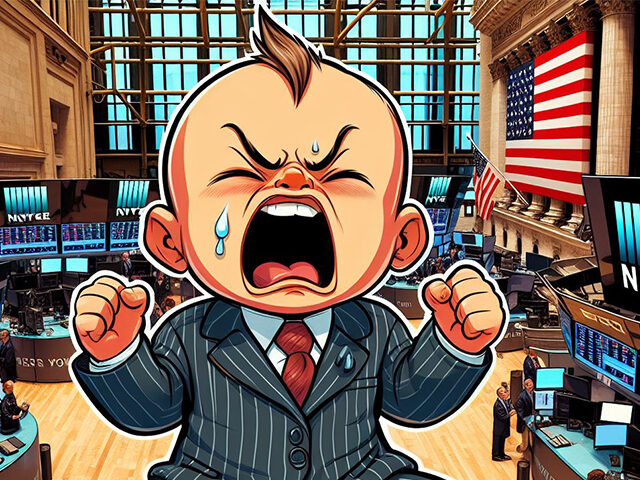Countdown to the 10-Year Dropping Below Four Percent
Only one-tenth of a point or so to go.
That’s all it would take to push the yield on the 10-year Treasury down below four percent after investors bid up the 10-year again on Wednesday. The four percent by the end of the year calls that seemed wild and even outlandish just a few weeks ago now look conservative. A dip in jobless claims on Thursday or a non-farm payrolls figure that is merely not-hotter-than expectations would probably be enough to force the matter.
It’s tempting to see the slump in the 10-year yield—it fell another 5 basis points on Wednesday—as a sign that investors are anticipating a recession. Often enough, yields fall when investors are seeking the safety of bonds and shedding risk assets. Yet for five weeks stocks have been ascending on an orgy of optimism. The Nasdaq Composite is up 5.2 percent over the past month—even after accounting for the mild sell-off this week.
Many stocks appear to be priced for perfection, reflecting a Goldilocks scenario in which everything is just right. Or at least one in which nothing can go seriously wrong.
“We’re sort of in this interesting Goldilocks period right now,” Apollo Asset Management’s James Zelter told Bloomberg TV on Tuesday. “Concern about a slowdown has been on everybody’s mind the last six, seven months. The Fed’s done a really nice job of maintaining higher rates. So I would argue that the Fed put is back, sort of, on the market right now.”
For many investors, the future looks incredibly bright. If the economy continues to grow and inflation keeps coming down, the Fed has room to cut next year. If the economy appears to be at risk of faltering, the Fed will cut. If the economy grows faster than expected and inflation stays high, the Fed may keep rates higher for a bit longer, but sales and profits will be higher too, justifying the higher valuations even in light of higher rates.
Of course, there’s still a risk that rates will go higher next year. Even Fed Chairman Jerome Powell said so at his recent fireside chat. But almost no one believes him.
The December Fed Meeting May Move Markets
We’re only one week away from the last Federal Open Market Committee (FOMC) meeting of the year. While the Fed is unlikely to raise its benchmark target, it will have several opportunities to rein in market expectations for rate cuts. First and foremost, there’s the official statement, which is unlikely to change much in a way that would dampen expectations for rate cuts next year.
Then there’s Jerome Powell’s press conference. Powell has shown the ability to confront the market and challenge rate expectations in speeches. Yet he has not used the official post-FOMC press conference to do so. What’s more, the market is likely to interpret any conditional warnings about the possibility of rate hikes in the most dovish way possible. And Powell is unlikely to deliver unconditional statements next week—or ever.

Federal Reserve Chairman Jerome Powell exits his press conference following the Federal Open Market Committee (FOMC) meeting in Washington, DC, on Nov. 1, 2023. (Al Drago/Bloomberg via Getty Images)
That leaves the Summary of Economic Projections. The last time we saw the projections of Fed officials was back in September. Those are now obviously outdated. For one thing, they projected that the fed funds rate would average 5.6 percent by year end—a forecast of one more hike at the November or December meeting. That’s not happening. Absent the emergence over the next week of some unforeseen sign that inflation is surging, we’ll end the year with the effective rate at around 5.33 percent, the middle of the target range of 5.25 percent to 5.50 percent.
The big question is what happens to the Fed’s projections for next year. In the September projections, the median forecast was for 5.1 percent at the end of 2024. That would have been two rate cuts from the median projection of 5.6 percent for this year or one cut from where the target has been since July. If the Fed sticks to that path, we would expect the fed funds target to end up between 4.75 percent and 5.25 percent next year.
The fed funds futures market is assigning no chance that the Fed’s target stays above five percent by year end and only a 2.2 percent chance that the target is above 4.75. There’s currently around a nine percent chance that the range is 4.50 percent to 4.75 percent and a 21 percent chance that it is 4.25 percent to 4.50 percent. If you add those up, the market is suggesting less than a one-in-three chance that the bottom of the range of the fed funds target is 4.25 percent or higher.
To put it differently, the market is pricing in a two-in-three chance that the Fed cuts by at least 100 basis points by year end. There’s a 31 percent chance that the target is 4.00 to 4.25 percent, and a one-in-four chance that it is 3.75 to four percent. There’s nearly a one-in-ten chance that it is even lower than that.
What if the Projections Stay High?
Markets appear to suspect that Fed officials will share at least some of this enthusiasm for rate cuts in the form of a significant lowering of the SEP forecast for rates next year. Credit analysts at Bank of America pointed out in a note this week that historically, the market tends to track the Fed’s economic projections but with a negative spread, meaning that the market sees lower rates than the Fed does. Current pricing of 2-year Treasuries at the historical spread implies that the Fed’s projected rate for next year will move down 100 basis points at next week’s meeting.
As the Bank of America analysts point out, that seems extremely unrealistic.
“A revision of that magnitude or larger was only observed twice: to the downside in June 2020 on the back of emergency Covid policies and to the upside in June 2022 when the Fed pivoted from 50bps hike increments to 75bps,” they write. “Without a downward revision of close to 100bps in the 2024 median dot, history suggests that the market may struggle to retain that wide of a spread to Fed expectations. Historically, the Fed has closed these wide gaps to meet the market, but next week will be a test of whether this pricing is endorsed.”
In other words, even if the Fed moves down its projection for year-end by as much as 50 basis points, from 5.1 to 4.6, this will be a tightening shock to markets.
Buckle up and return to your seats. There’s likely to be some turbulence ahead.

COMMENTS
Please let us know if you're having issues with commenting.